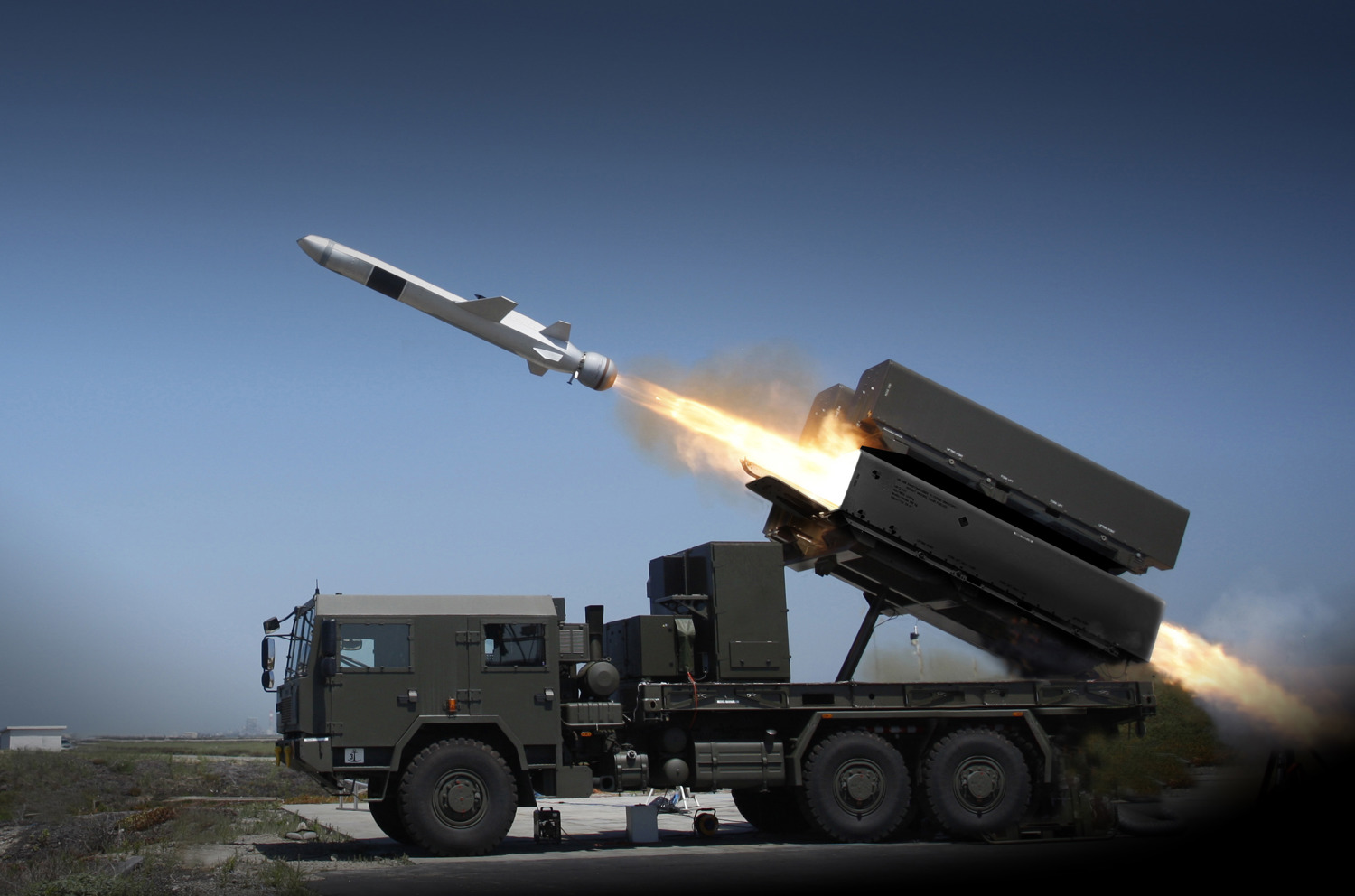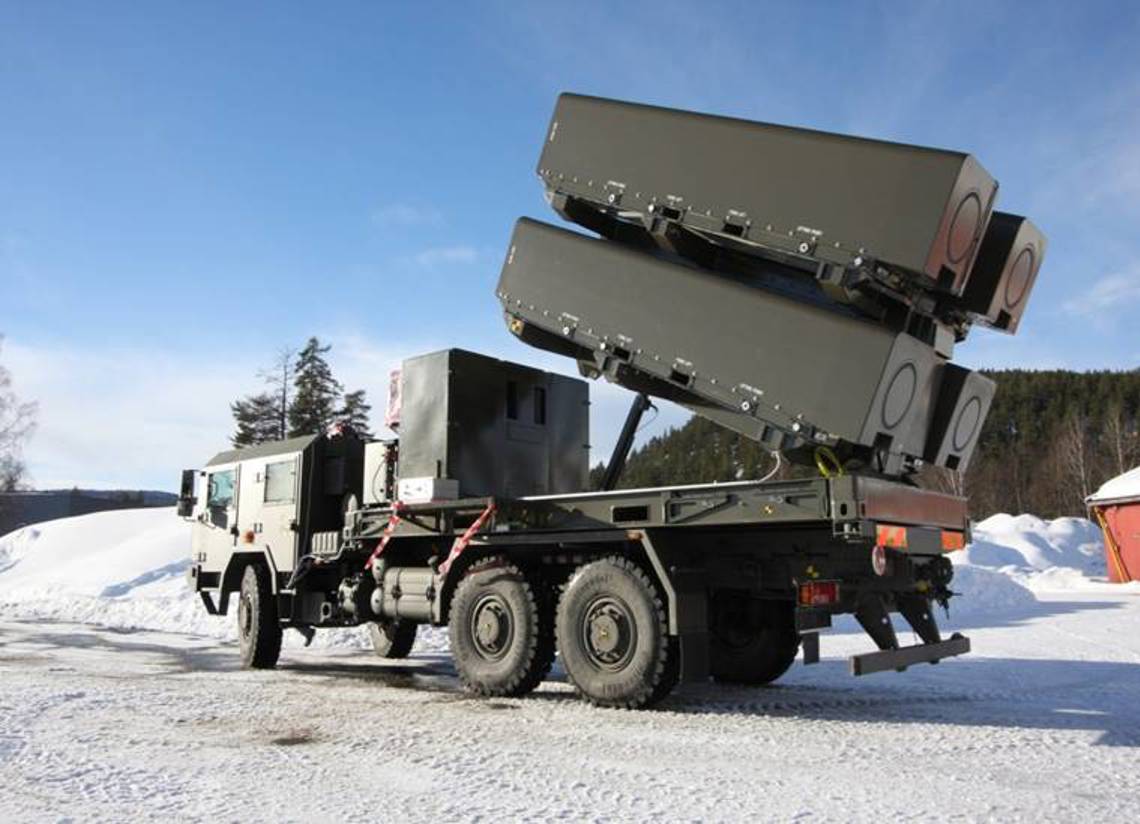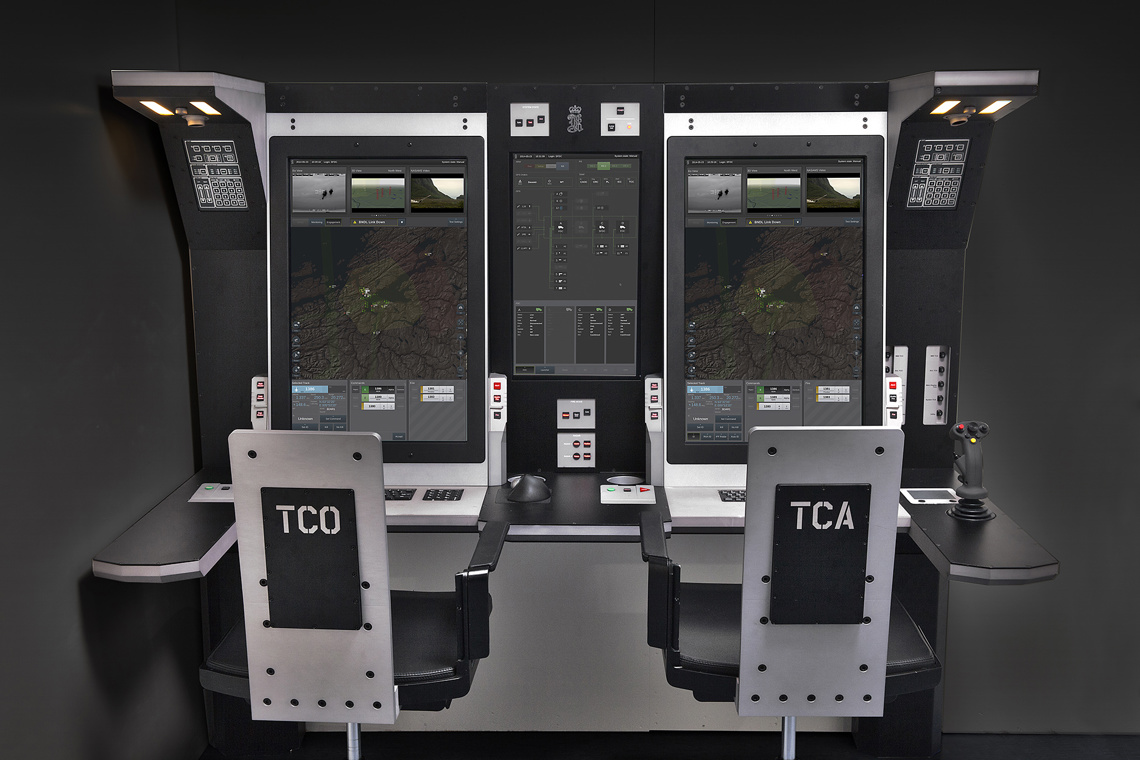
Naval Strike Missile (NSM™) Coastal Defence System
The NSM™ CDS is a precision strike Surface-to-Surface Missile (SSM) System.
The NSM™ CDS is a high-performance ground based Coastal Defence System. It has unique features with a net centric architecture which enables multiple simultaneous engagements and over the horizon (OTH) targeting. These capabilities, combined with the unique NSM™ target recognition, shapes a highly potent and vast SSM system for the future. The system can be closely integrated and adapted to a country’s adjacent weapons and command and control systems. This expands the defended area and enhances the total fighting capability of the force.
The NSM™ CDS is composed of the following major items:
- The Fire Control Center (FCC) providing fire control and Battle Management Command Control Communication Computers and Information (BMC4I)
- The Naval Strike Missile Launcher fire unit, a canister protected weapon platform with the NSM™ missile
- Sea surveillance and tracking radar - customer selectable (optional)
The NSM™ missile has unique capabilities compared to legacy anti-ship cruise missiles. The missile has been designed to ensure a high probability of hit in the current and anticipated future challenging naval scenarios.
The FCC is the central integrating element for the NSM™ CDS system. It is based on the similar proven KONGSBERG BMC4I FDC used in the NASAMS System. More than 120 FCC/FDCs have been delivered worldwide in different configurations including several NATO countries and the USA. The FCC is vehicle type independent.
NSM™ CDS system is selected by Poland, USA, and Romania. The NSM™ missile is selected for ship-based systems by Norway, Malaysia, Germany, USA, Canada, Australia, Spain, United Kingdom, and the Netherlands. NSM™ is interchangeable between ships and trucks.
FEATURES
- Long range NSM™
- Surface-to-Surface
- Missile System with Sea & Land Target Capability
- NSM™ Key Features
- Survivable
- Stealth
- Passive
- Sea skim
- Overland low flight
- Terminal maneuvers
- Targeting
- Autonomous Target
- Recognition
- Aim point selection
- High precision
- Advanced BMC4I Distributed Real Time network
- Open architecture for future system growth
- Multiple simultaneous engagement capability
- Coordinated time on target(s) for salvo firings
Sea and land mission
The primary missions for NSM™ CDS are maritime interdictions against sea targets from small and light ships made of Glass Fiber Reinforced Plastics (GFRP) to large naval combatants like destroyers and frigates and ships with thick hull like icebreakers.
Secondly, land targets are handled by the NSM™ CDS. The land attack capability is primarily based on use of the military GPS, but seeker assisted land attack capability is also available if requested. Typical land targets are stationery, soft targets like harboring depot buildings, command and control facilities, sensor sites and air defence sites. Ships secured alongside jetty are categorized as a land target, enabling a high precision harbor attack capability.
Advanced real time network with plug & fight architecture
The user-friendly system is designed to operate in an advanced, real-time network with plug & fight capability. The main core nodes in the network are the FCCs, to which any sensor or launcher can be integrated. The network of up to 4 FCCs establishes a single integrated maritime picture enabling and enhancing situational awareness’s through data sharing.
Network engagement capability
Each of the FCCs can, when authorized, locally engage up to 12 different targets or use up to 12 missiles against the same target in a salvo. Through a defined FCC in the network, it is possible to plan and control up to 48 NSM™ engagements simultaneously against 48 different targets. The network further utilizes the NSM™ embedded features for different salvo sizes per target. Including the possibility for simultaneous time on target, using salvo engagements or network enabled coordinated engagements for maximum attrition.
Target allocation
The system can receive target data from an organic sea surveillance radar or through external sources on data links or interface message protocols.
Interoperability through tactical data links & interface
- JREAP
- Link 11A & B
- Link 16
- Asterix
Other customer specific tactical data links and message protocols can be implemented by utilizing legacy and/or indigenous links, and the system’s open SW and HW architecture to create a mix of multiple tactical data links.
Flexible configuration
The NSM™ CDS system’s modularity in both hardware and software ensures a cost-effective focus on system growth in the areas of BMC4I, other sensors and other effectors. With the open architecture, the FCC provides future system configuration flexibility. Different software modules can easily be changed or replaced without interfering with the other modules.

